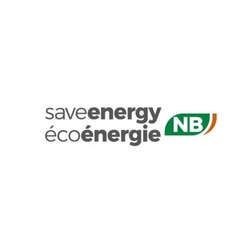Grants and Funding for Plastic Manufacturing in the Atlantic Provinces for 2025
Grants for plastics processing projects across Atlantic Canada.
Plastic manufacturers in Atlantic Canada can access an array of government grants, rebates, tax credits, and financing to upgrade equipment, adopt automation, and expand exports. This directory explains major federal and provincial programs relevant to injection molding, extrusion, thermoforming, blow molding, compounding, and recycling. It is designed for organizations of all sizes seeking clear guidance on eligibility, application steps, and how to combine programs effectively.
4 opportunities available

Grant and FundingOpen
New Construction Commercial and Industrial Energy Efficiency Program
NB PowerSupports energy-efficient commercial and industrial new building projects
Eligible Funding
- Maximum amount : 250,000 $
- Up to 25% of project cost
Eligible Industries
- Agriculture, forestry, fishing and hunting
- Construction
- Manufacturing
- Wholesale trade
Types of eligible projects
Environment and Climate

Grant and FundingExpert AdviceOpen
Industrial Energy Efficiency Program
Save Energy NBSupports industrial energy efficiency projects in New Brunswick
Eligible Funding
- Maximum amount : 1,000,000 $
Eligible Industries
- Utilities
- Manufacturing
Types of eligible projects
Environment and Climate

Tax CreditsOpen
Nova Scotia Capital Investment Tax Credit
Government of Nova ScotiaRefundable corporate tax credit for qualifying Nova Scotia investments
Eligible Funding
- From $5,000,000 to $100,000,000
- Up to 25% of project cost
Eligible Industries
- Agriculture, forestry, fishing and hunting
- Manufacturing
Types of eligible projects
TechnologyInnovation

Grant and FundingOpen
Business Rebate Program
NB PowerSupports business energy efficiency upgrades in New Brunswick
Eligible Funding
- Maximum amount : 250,000 $
- Up to 25% of project cost
Eligible Industries
- Agriculture, forestry, fishing and hunting
- Utilities
- Construction
- Manufacturing
Types of eligible projects
Environment and Climate
Frequently asked questions about plastic manufacturing grants in the Atlantic Provinces
Here are concise answers to common questions about grants, funding, rebates, and tax credits for plastics manufacturers across Atlantic Canada.
What grants exist for injection molding in Nova Scotia?
Can extrusion upgrades in New Brunswick receive funding?
Are there grants for thermoforming equipment in PEI?
How do plastics firms in Newfoundland and Labrador fund a blow molding machine?
What is the role of IRAP for plastics SMEs?
Can I get funding for recycled plastics and circular economy projects?
How do training grants support injection molding technicians?
How can helloDarwin help plastics manufacturers secure funding?
Can helloDarwin assist with digital adoption and MES/ERP funding?
What documents improve success rates for plastics funding?
By Funding Type
Commercialization Grants in Saskatchewan for 2025
Grants and Funding in Alberta
Grants and Funding in British Columbia
Grants and Funding in Manitoba
Grants and Funding in Northern Canada
Grants and Funding in Ontario
By Business Size
Grants and Funding for Small Businesses in Alberta
Grants and Funding for Small Businesses in Atlantic Provinces
Grants and Funding for Small Businesses in Manitoba
Grants and Funding for Small Businesses in Nova Scotia
Grants and Funding for Small Businesses in Ontario
By Service
AI Grants and Funding in British Columbia
Artificial Intelligence (AI) Grants and Funding in Saskatchewan
Artificial Intelligence Grants and Funding in Alberta
Artificial Intelligence Grants and Funding in Atlantic Provinces
Artificial Intelligence Grants and Funding in the Canadian Prairies
Artificial Intelligence Grants in Quebec
Clean Technology Grants in Ontario
Commercialization Grants and Funding in British Columbia in 2025
Commercialization Grants and Funding in Nova Scotia for 2025
Commercialization Grants and Funding in the Canadian Prairies
Commercialization Grants in Alberta in 2025
Commercialization Grants in Atlantic Canada
Commercialization Grants in Manitoba for 2025
Commercialization Grants in New Brunswick, Canada for 2025
Commercialization Grants in Ontario for 2025
Commercialization Grants in Quebec for 2025
Digital Transformation Grants in Alberta
Digital Transformation Grants in British Columbia
Digital Transformation Grants in Manitoba
Digital Transformation Grants in New Brunswick
Digital Transformation Grants in Nova Scotia
Digital Transformation Grants in Ontario
Digital Transformation Grants in Quebec
Digital Transformation Grants in Saskatchewan
Digital Transformation Grants in the Atlantic Provinces
Digital Transformation Grants in the Canadian Prairies
Environmental Grants in Alberta
Environmental Grants in British Columbia
Environmental Grants in Manitoba
Environmental Grants in New Brunswick
Environmental Grants in Nova Scotia
Environmental Grants in Saskatchewan
Environmental Grants in the Atlantic Provinces
Environmental Grants in the Canadian Prairies
Grants and Funding for AI in Ontario
Grants and Funding for Artificial Intelligence in Quebec
Grants and Funding for Green Manufacturing and Decarbonization in Atlantic Canada
Grants and Funding for Green Manufacturing and Decarbonization in Ontario
Grants and Funding for Green Manufacturing and Decarbonization in Quebec
Grants and Funding for Green Manufacturing and Industrial Decarbonization in Manitoba
Grants for Clean Technology Adoption in Quebec
Grants for Digital Transformation in Ontario
Grants for Green Manufacturing & Decarbonization in Saskatchewan
Grants for Green Manufacturing and Decarbonization in Alberta
Grants for Green Manufacturing and Decarbonization in British Columbia
Grants for Green Manufacturing and Decarbonization in New Brunswick
Grants for Green Manufacturing and Decarbonization in Nova Scotia
Grants for Green Manufacturing and Decarbonization in the Canadian Prairies
Innovation Grants in Alberta
Innovation Grants in British Columbia
Innovation Grants in Quebec
Job Grants and Wage Subsidies in British Columbia
Job Grants and Wage Subsidies in Manitoba
Job Grants and Wage Subsidies in New Brunswick
Job Grants and Wage Subsidies in Nova Scotia
Job Grants and Wage Subsidies in Quebec
Job Grants and Wage Subsidies in Saskatchewan
Job Grants and Wage Subsidies in the Atlantic Provinces
Job Grants and Wage Subsidies in the Canadian Prairies
Job Grants in Alberta
Job Grants in Ontario
Technology Grants in Alberta
Technology Grants in British Columbia
Technology Grants in New-Brunswick
Technology Grants in Ontario
Technology Grants in Quebec
By Audience
By Industry
Culture Grants and Funding in Alberta
Culture Grants and Funding in British Columbia
Culture Grants and Funding in Manitoba
Culture Grants and Funding in New Brunswick
Culture Grants and Funding in Nova Scotia
Culture Grants and Funding in Ontario
Culture Grants and Funding in Saskatchewan
Culture Grants and Funding in the Atlantic Provinces
Culture Grants and Funding in the Canadian Prairies
Education Grants and Funding in Saskatchewan
Education Grants and Funding in the Canadian Prairies
Education Grants in Alberta
Education Grants in British Columbia
Education Grants in Manitoba
Education Grants in New Brunswick
Education Grants in Nova Scotia
Education Grants in Ontario
Education Grants in Quebec
Education Grants in the Atlantic Provinces
Grants and Funding for Agriculture in the Canadian Prairies
Grants and Funding for Construction Companies in Alberta
Grants and Funding for Construction Companies in Atlantic Canada
Grants and Funding for Construction Companies in British Columbia
Grants and Funding for Construction Companies in Manitoba
Grants and Funding for Construction Companies in New Brunswick
Grants and Funding for Construction Companies in Nova Scotia
Grants and Funding for Construction Companies in the Canadian Prairies
Grants and Funding for Culture in Quebec
Grants and Funding for Financial Services in Alberta
Grants and Funding for Financial Services in Atlantic Provinces
Grants and Funding for Financial Services in Nova Scotia
Grants and Funding for Financial Services in Ontario
Grants and Funding for Financial Services in Quebec
Grants and Funding for Financial Services in Saskatchewan
Grants and Funding for Financial Services in the Canadian Prairies
Grants and Funding for the Mining Sector in Alberta
Grants and Funding for the Mining Sector in Atlantic Provinces
Grants and Funding for the Mining Sector in British Columbia
Grants and Funding for the Mining Sector in Manitoba
Grants and Funding for the Mining Sector in Nova Scotia
Grants and Funding for the Mining Sector in Ontario
Grants and Funding for the Mining Sector in Quebec
Grants and Funding for the Mining Sector in Saskatchewan
Grants and Funding for the Mining Sector in the Canadian Prairies
Grants and Funding in Agriculture in Alberta
Grants and Funding in Agriculture in Atlantic Provinces
Grants and Funding in Agriculture in British Columbia
Grants and Funding in Agriculture in Manitoba
Grants and Funding in Agriculture in New Brunswick
Grants and Funding in Agriculture in Nova Scotia
Grants and Funding in Agriculture in Ontario
Grants and Funding in Agriculture in Quebec
Grants and Funding in Agriculture in Saskatchewan
Grants for Construction Companies in Ontario
Grants for Construction in Québec
Healthcare Grants and Funding in Alberta
Healthcare Grants and Funding in Atlantic Provinces
Healthcare Grants and Funding in British Columbia
Healthcare Grants and Funding in Manitoba
Healthcare Grants and Funding in New Brunswick
Healthcare Grants and Funding in Nova Scotia
Healthcare Grants and Funding in Ontario
Healthcare Grants and Funding in Quebec
Healthcare Grants and Funding in Saskatchewan
Healthcare Grants and Funding in the Canadian Prairies
Manufacturing Grants and Funding in Alberta
Manufacturing Grants and Funding in Atlantic Provinces
Manufacturing Grants and Funding in British Columbia
Manufacturing Grants and Funding in Manitoba
Manufacturing Grants and Funding in New Brunswick
Manufacturing Grants and Funding in Nova Scotia
Manufacturing Grants and Funding in Saskatchewan
Manufacturing Grants and Funding in the Canadian Prairies
Manufacturing Grants in Ontario
Manufacturing Grants in Quebec
Transport Grants and Funding in Manitoba
Transport Grants and Funding in Ontario
Transport Grants and Funding in Saskatchewan
Transport Grants and Funding in the Canadian Prairies
Transport and Warehousing Grants and Funding in New Brunswick
Transportation and Warehousing Grants and Funding in Alberta
Transportation and Warehousing Grants and Funding in Atlantic Provinces
Transportation and Warehousing Grants and Funding in British Columbia
Transportation and Warehousing Grants and Funding in Nova Scotia
Transportation and Warehousing Grants and Funding in Quebec
By Industry Subsectors
Food Manufacturing Grants in Manitoba
Food Processing Grants in Alberta
Food Processing Grants in British Columbia
Food Processing Grants in New Brunswick
Food Processing Grants in Nova Scotia
Food Processing Grants in Ontario
Food Processing Grants in Quebec
Food Processing Grants in Saskatchewan
Food Processing Grants in the Canadian Prairies
Forestry Grants and Funding in Atlantic Canada
Forestry Grants and Funding in Saskatchewan
Forestry Grants in Alberta
Forestry Grants in British Columbia
Forestry Grants in New Brunswick
Forestry Grants in Nova Scotia
Forestry Grants in Ontario
Forestry Grants in Quebec
Forestry Grants in the Canadian Prairies
Grants and Funding for Food Processing in Atlantic Canada
Grants and Funding for Metal Manufacturing in Ontario
Grants and Funding for Plastic Manufacturing in Alberta
Grants and Funding for Plastic Manufacturing in New Brunswick
Grants and Funding for Plastic Manufacturing in Nova Scotia
Grants and Funding for Plastic Manufacturing in Ontario
Grants and Funding for Plastic Manufacturing in Quebec
Grants and Funding for Plastic Manufacturing in the Canadian Prairies
Grants and Funding for Textile Mills in New Brunswick
Grants and Funding for Textile Mills in Quebec
Grants and Funding for Tourism in Alberta
Grants and Funding for Tourism in Ontario
Metal Manufacturing Grants and Funding in Nova Scotia
Metal Manufacturing Grants in Alberta
Metal Manufacturing Grants in Atlantic Canada
Metal Manufacturing Grants in New Brunswick
Metal Manufacturing Grants in Quebec
Metal Manufacturing Grants in Saskatchewan
Metal Manufacturing Grants in the Canadian Prairies
Textile Mill Grants in Alberta
Textile Mill Grants in Atlantic Canada
Textile Mill Grants in Ontario
Textile Mill Grants in the Canadian Prairies
Tourism Grants and Funding in British Columbia
Tourism Grants and Funding in Manitoba
Tourism Grants and Funding in New Brunswick
Tourism Grants and Funding in Quebec
Tourism Grants and Funding in the Atlantic Provinces
Tourism Grants and Funding in the Canadian Prairies
Wood Manufacturing Grants and Funding in British Columbia
Wood Manufacturing Grants and Funding in Ontario
Wood Manufacturing Grants in Alberta
Wood Manufacturing Grants in Atlantic Provinces
Wood Manufacturing Grants in New Brunswick
Wood Manufacturing Grants in Nova Scotia
Wood Manufacturing Grants in Quebec
Wood Manufacturing Grants in the Canadian Prairies